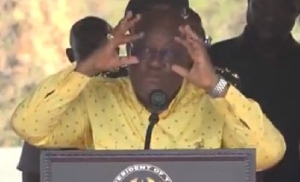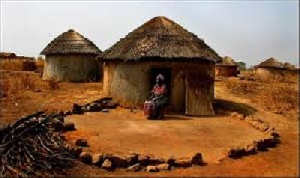Business News of Thursday, 12 March 2020
Source: goldstreetbusiness.com
Key gov’t initiatives, projects under funding threat
Key government initiatives and projects are most likely to face imminent financing threat as revenue sources allocated in the 2020 budget are under an intense strain due to external developments.
Most of the initiatives intended to be funded through the Annual Budget Funding Amount (ABFA) for 2020, will be subject to government’s revision of its projections since its crude oil benchmark price for the year, used in making revenue projections is US$58.66 per barrel, far higher than the current global market price of around US$35 per barrel. Currently, this leaves revenue gap of about US$ 21.31 per barrel.
Total benchmark oil revenue projected for 2020 is US$1,150.84 million. Of the benchmark revenue, 70 percent has been allocated to the ABFA which amounts to about US$573.08 million.
Top among these initiatives to be significantly affected include the Free Senior High School Program, Planting for Food and Jobs, construction of irrigation dams, fish landing sites, roads and railways development projects, the operationalization of development authorities and health infrastructures.
However, in an interview via email, an economist with the Institute for Fiscal Studies (IFS), Mr. Leslie Dwight opined that it may be too early to call for revision of the 2020 budget.
“It’s too early to call for a formal revision of the budget. The case for it will certainly be strengthened if the low-price condition persists, but we’ll have to watch how the situation develops,” Mr. Dwight said
The total projected ABFA spending for 2020, (oil and non-oil revenues inclusive) includes allocation to Free SHS which is estimated at GHc 1,297.76 million; roads infrastructure was allocated GHc 1,201 million; whereas Planting for Food and Jobs, and Construction of Irrigation dams have been allocated about GHc 150 million and GHc 75.98 million respectively.
Other capital expenditure allocations include an amount of about GHc 755.40 million for the construction and operationalization of development authorities across the country, as well as GHc 112.58 million for railways development and GHc 125 million for the capitalization of new regions.
On Tuesday, March 10, 2020, Brent oil prices rebounded by about four percent from the biggest one-day drop in nearly 30 years, as investors eyed the possibility of economic stimulus, although a looming price war weighed on sentiment. Brent crude futures were up US$ 1.44, to US$ 35.80 a barrel by Tuesday morning, after hitting a session high of US$37.38 a barrel.
Experts in the market have opined that the forecast for the oil market is even more dire than in November 2014, when such a price war last started, as it comes to a head with the signi?cant collapse in oil demand due to the coronavirus.
Mr. Dwight further said, “There is a clear threat posed to public spending plans by lower-than-expected oil prices, but let’s remember the effect is likely to be mitigated by drawing resources from the Ghana Stabilisation Fund (GSF) to shore up spending. Of course, there’s a limit to mitigation via the GSF, and if the revenue shortfall is pretty large, then spending cuts would be inevitable.”
Cumulatively, from 2011 to September, 2019, the GSF is estimated at US$ 873.04 million. In the 2020 budget, an estimated US$171.92 million is allocated to the Ghana Stabilisation Fund and US$73.68 million to the Ghana Heritage Fund.
Mr. Dwight suggested that If spending cuts become necessary, then, to the maximum extent possible, capital spending, which has been weak in recent years, should be protected.
The total ABFA allocation for 2020 stands at GHc 4,336.18 million. Of this CAPEX allocation is projected at GHc 3,035.33 million, whereas GHc 1,300.85 million is allocated to goods and services.
The 2020 Benchmark Revenue (BR) crude oil output is 70.2 million barrels (192,336 barrels of oil per day), based on a three-year simple average of each producing field’s actual and projected outputs. However, already Tullow Ghana has projected a production cut of about 30 percent, which could further worsen the situation .











